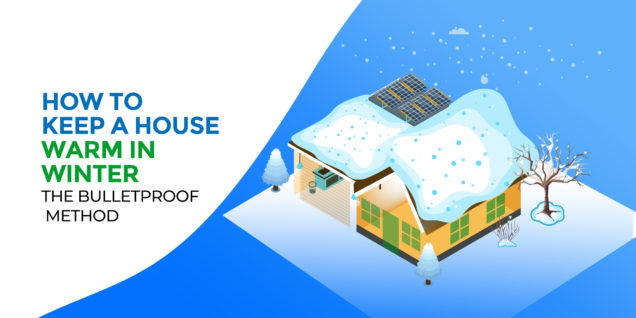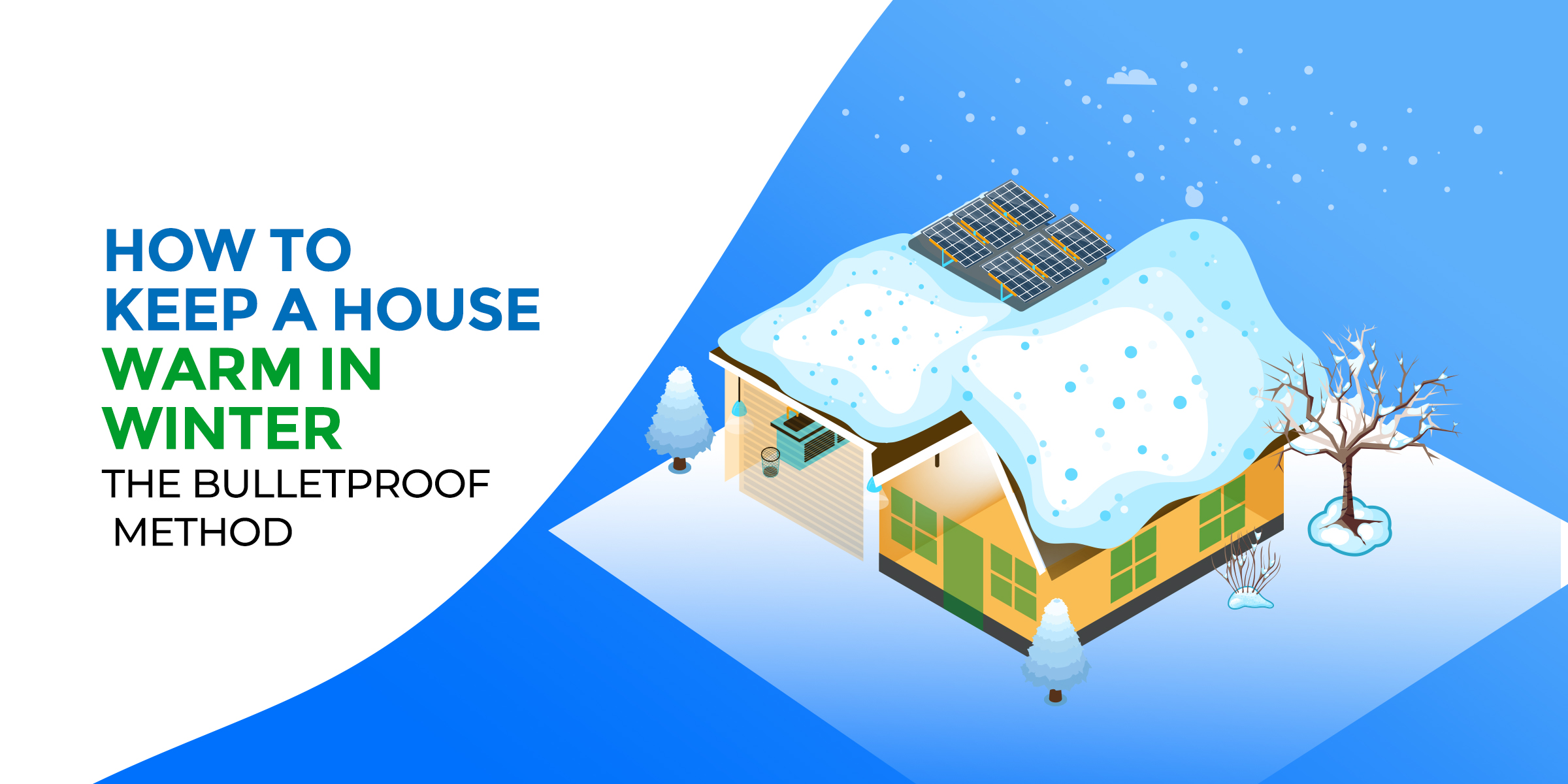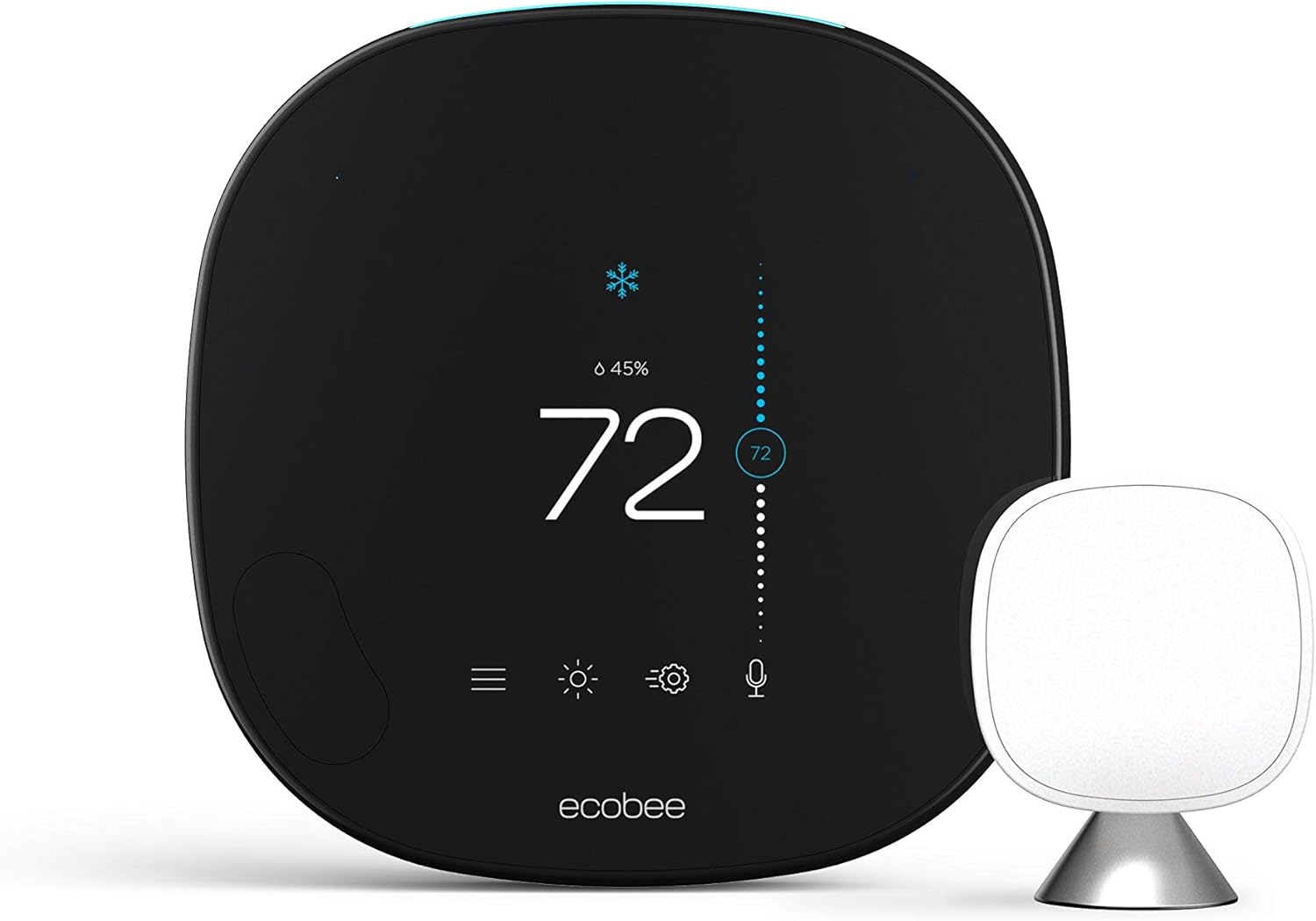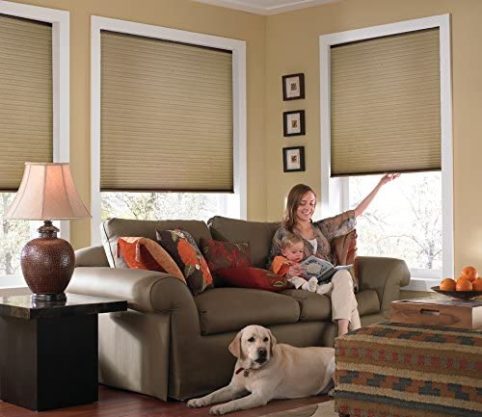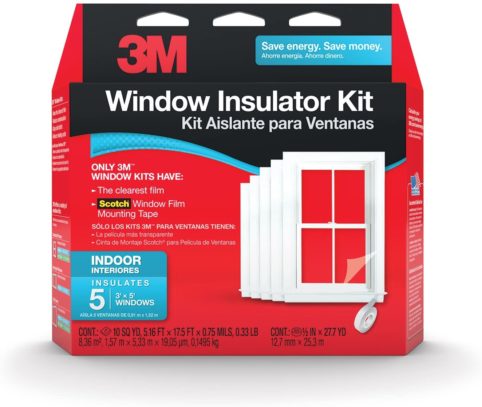There are few things better than walking into a warm, properly heated home after walking back from work or school on a frigid winter day.
There are few things worse than having to endure all that cold and coming home expecting the warm embrace of your home only to be met by an equally icy house that takes way too long to heat up.
This is the struggle for many homeowners during the winter. It’s been known that residents see a hike in their electricity bills during these months since they have to crank their heaters and AC all day, but when your home doesn’t even warm up properly, it feels like an absolute waste of money.
With remote work and virtual classrooms quickly becoming the norm, staying inside and properly controlling your house’s temperature has never been so important. However, there are plenty of solutions outside of cocooning yourself in a dozen blankets at night.
In this article, we break down why your home seems to never get warm enough during the winter, and what can be done to fix these situations while saving a fortune on electricity bills.
[toc]
Why your house won’t stay warm when it’s cold
The reason your home never feels like it’s getting to the right temperature despite consistently using your heater is that that warm air is escaping. We want to explore where that precious air goes, and why it tends to escape.
Heat seeks out cold
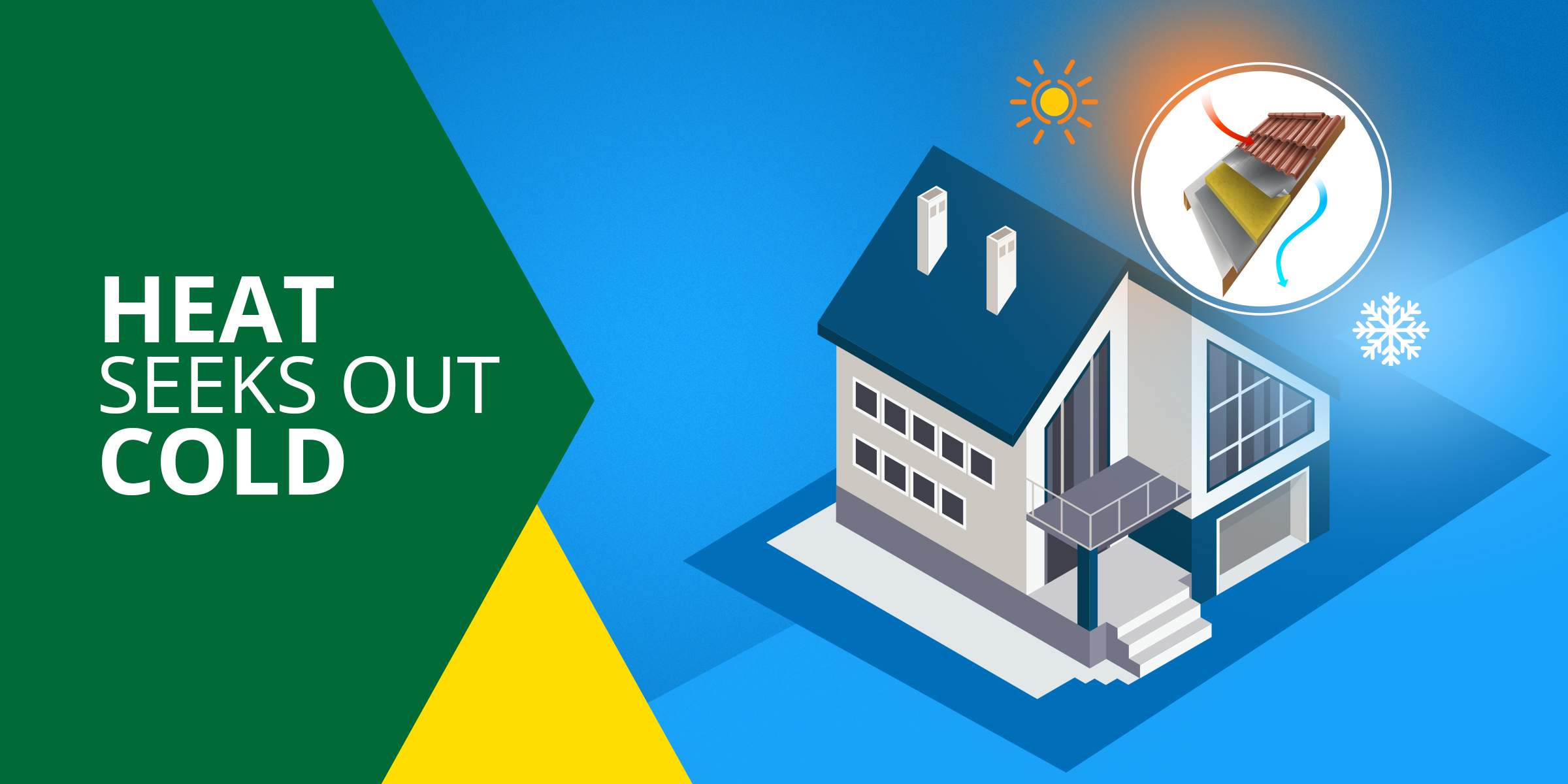
The general rule of thumb with heat is that it tends to move where it doesn’t exist.
The second law of thermodynamics states that heat naturally tries to balance out the temperature in any environment by constantly “chasing” after colder air. That means if your house has a higher temperature than the outside, heat is naturally going to gravitate towards areas that are colder.
The temperatures between rooms are constantly going to try and even each other out, with the heat from one room seeking the colder areas of another. However, it’s not just rooms seeking equilibrium that contributes to colder homes, as much of that can be blamed on leakages.
Air carries heat, so any areas that can leak warm air and expose the rest of your home to the colder outdoors is where the heat generated inside your house will go. As such, heat generally escapes through leaks near windows, doors, crawl spaces, and most commonly, your attic.
Warm air rises
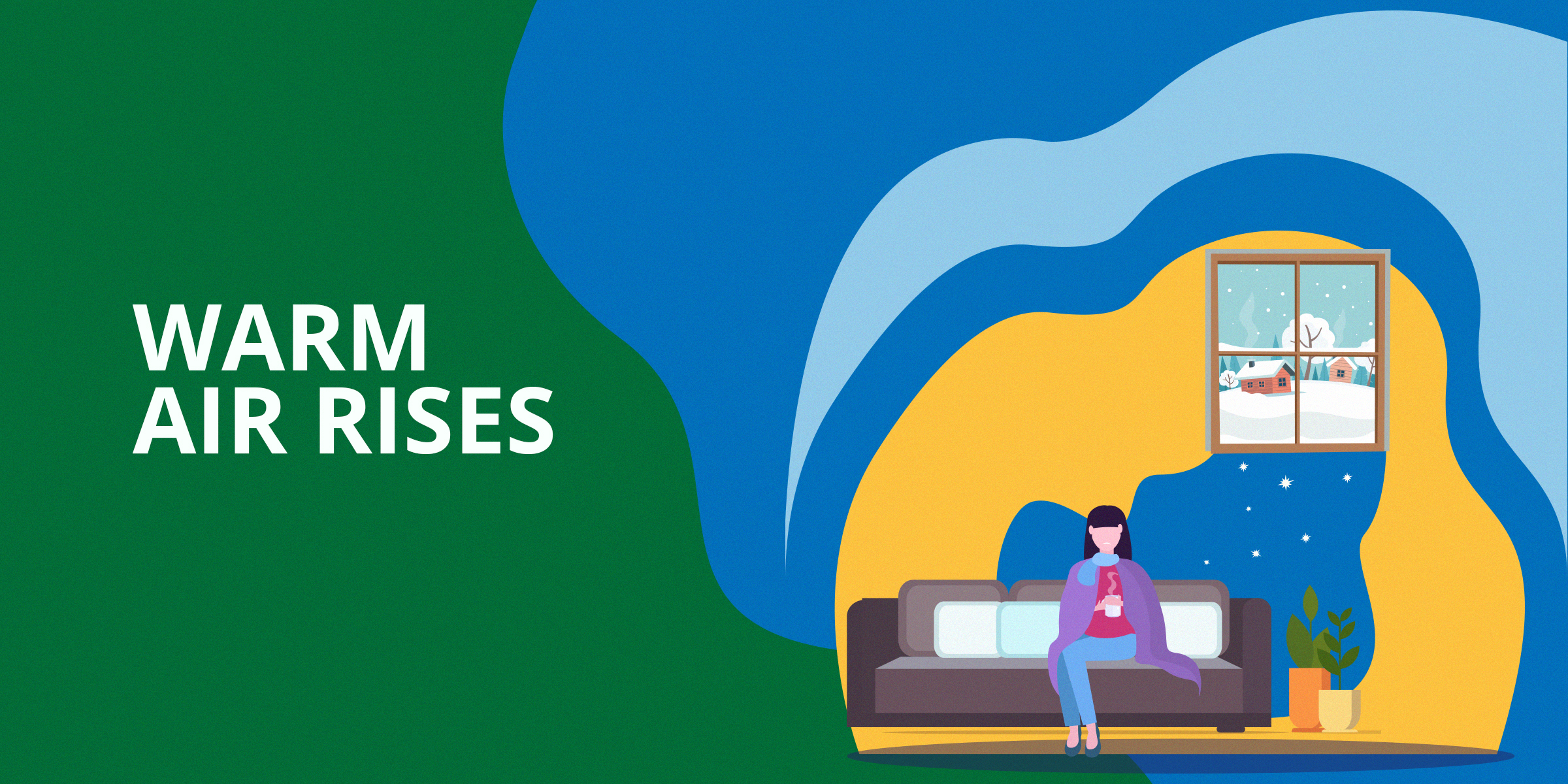
The attic is the most susceptible room in the house to heat leakage. Think about how rooms are often much hotter upstairs than downstairs during the summer. That’s because hot air rises from the heat trying to travel to cooler places.
Heat in the winter works in the same way. Any warmth generated from heating systems is likely going to travel upstairs because the attic is often some of the draftiest areas of the home. Although houses are built with this design flaw in mind, if you don’t have the proper insulation in your attic and in other susceptible areas of your home, you’re going to be feeling far colder than warmth in the winter.
Poor sealing and insulation
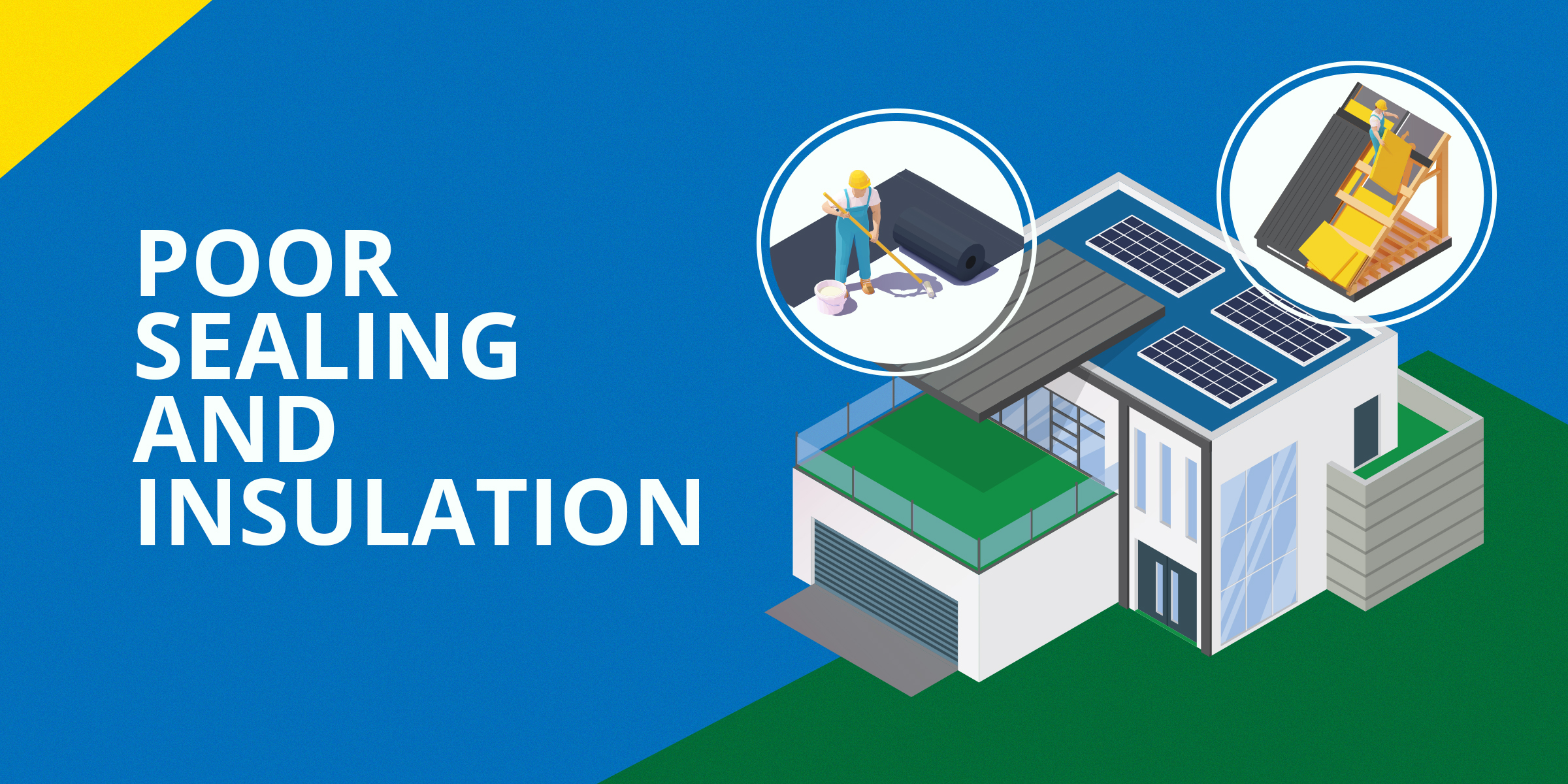
And so the most obvious solution for keeping warm air inside your home is to properly insulate your home. As we mentioned, the attic is likely the biggest culprit of heat leakage in most homes, but it can occur in other areas as well. This is probably because the sealing and insulation in those leaky spots are insufficient.
This can be for a number of reasons. Whoever tried sealing your home might have missed a few key spots. If you have fiberglass batts installed in your attic, it’s probably going to leak unless it was cut perfectly. Humidity in your attic can cause insulation to become faulty and fall to the ground. Maybe building codes were lax on insulation back when your home was being built. The list goes on and on.
It’s important to know that sealing and insulation are both important to keeping heat inside your home and creating a consistent flow of warm air. While they can be faulty at times, there are actions you can take to make sure that both your sealants and insulation are working to their maximum potential.
How to keep your house warm during winter
There are certainly small steps you can take to warm up your home, and that’s going to depend on a room-to-room basis. Maybe installing space heaters for extremely vulnerable areas of your home is going to be the simplest solution.
However, trying to keep warm air in your home by sealing off leaky areas is going to take a more concerted effort. It all starts with targeting the largest culprit of heat leakage: the attic.
Improve air sealing and insulation in the attic
Like we mentioned earlier, much of a home’s energy efficiency during the winter is dependent on how well your attic is insulated and sealed. When either of those components is lackluster, that’s when your home gets colder and your winters more miserable.
A great place to start is by properly sealing and insulating your attic access, one of the most prominent sources of air leakage in your home. When your attic and attic access is not properly sealed, the warm air generated in the lower floors can easily escape into the attic and potentially through your attic walls.
This, coupled with identifying areas of your attic that are leaking and sealing them, is going to greatly reduce the amount of heat escaping through the attic. Properly insulating the attic floors will also greatly enhance your home’s energy efficiency. Blown-in attic insulations both work well in both winter and summer months, and multi-layer or reflective attic insulation is an innovative way of keeping heat out of your attic by reflecting back to its source.
Installing multi-layer insulation around your attic walls is also going to reduce ice dams. If your attic is attracting too much heat, it can warm up the snow accumulating on your rooftop. This causes snow to melt and cause ice dams, which can then cause excess moisture inside your attic. This can then degrade your batt or blown-in insulation. With multi-layer insulation, the heat will be directed back downstairs instead of up and outwards through the roof, eliminating the threat of ice dams and attic moisture.
Thus, when properly sealed and insulated, you can help create a much more controlled attic environment. This leads to increased energy efficiency through less heat and warm air escaping through your attic.
Alternative methods to warm up your home
Once you’ve targeted the more significant sources of heat leakage in your home, it might be worthwhile to explore smaller solutions for other rooms with similar issues around your home.
For example, a room that just always seems to feel colder than the rest might be a good place to start. It might be where the room is located in the house making it more susceptible to drafty winds, or it might just have poor access to warm airflow around the house.
Whatever it might be, these smaller spots may require you to dive deeper into our bag of energy efficiency tricks to make sure that your home is retaining as much heat as possible.
Use a programmable thermostat
Have an old manual set thermostat? It may be time for an upgrade. Programmable thermostats provide you with a way to add a schedule to your thermostat (either every day or weekdays and weekends) to adjust the temperature according to your schedule. Smart thermostats go one step further and learn how to optimize temperature efficiency based on your habits.
There are many different types of programmable and smart thermostats out on the market. We’ve reviewed the top smart thermostats in detail and have listed our favorite one below. For ideal savings and comfort, aim to keep the temperature between 60 and 70 degrees Fahrenheit throughout the day in the winter.
Our favorite smart thermostat: The all-new ecobee SmartThermostat with voice control enhances how you experience comfort by working with a state-of-the-art SmartSensor (included) and brings new meaning to having control of your home thanks to Alexa Built-inch Not only will it help you save energy and reduce the cost of heating and cooling your home, it also provides an easy way to have a lasting impact in the fight against climate change.
Buy on AmazonInvest in other window covers
Did you know that heat gain and heat loss through windows are responsible for 25%–30% of residential heating and cooling energy use.
Shutters are efficient ways of retaining heat inside your home, but it might not fit the look of the room, and finding the right dimensions for any specific window might be difficult. For instance, these energy-efficient curtains might be the right move. These curtains have heavy linings attached to the drapery, blocking out the sun in the summer while keeping heat from escaping in the winter.
Alternatively, blinds are another great way of keeping the cold out of your home. Tightly installed cellular shades can reduce heat loss through your windows, allowing you to better control your home temperature and save big on energy bills.
Our favorite insulated window shades: Windowsandgarden Custom Cordless Single Cell Shades are available in nine colors. They can do any size from 21 to 72 wide and 24 to 72 high. These are one of the most economical cellular shades, but they are still top-rated for quality and durability! Plus, they come with a limited lifetime warranty, so you will have these window treatments for many years to come.
Buy on AmazonInstall window film
Just as window film keeps heat out of homes when installed onto windows, it can effectively keep heat inside during the winter. Investing in window film is one of the most affordable and efficient ways to better control your home temperature.
It’s similar to your attic insulation, only for your windows. Window film adds another layer of protection against outside cold while keeping the heat generated inside your home from escaping through the window itself. It’s a worthwhile investment for the more inexpensive windows around your house.
Our favorite window film for homeowners: The 3M Indoor Window Insulator Kit is available in a variety of indoor and outdoor window sizes. This product keeps cold air in your home and the heat out during the summer. It’s easy to install and one of the clearest window films available so you won’t compromise light and views.
Buy on AmazonTalk to an expert
Finding air leaks in your home or finding the right solution for properly insulating a specific room can be hard to pin down, especially for those who’ve never had to take this on before. For that, we recommend consulting an expert to help you integrate the right energy efficiency and home comfort solutions.
There’s no point in aimlessly scrounging for the right solution when addressing this issue. Contact our Independent Authorized Yellowblue Dealer to choose the right method for implementing bulletproof comfort solutions in your home.
Get a Free Attic Inspection
Are you waking up in the middle of the night freezing? Has your heater been burning cash? 9 out of 10 homes in North American are under-insulated, so chances are you have a leaky inefficient attic.
To see if your attic is the primary source for unwanted heat transfer and an uncomfortable living environment, visit AtticInspector.com, the #1 resource for homeowners who want to improve their attic. Request a FREE attic inspection and keep your home warm this winter once and for all.
Get a Free Attic Inspection
